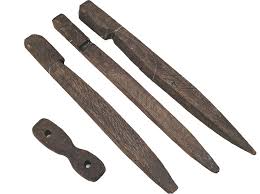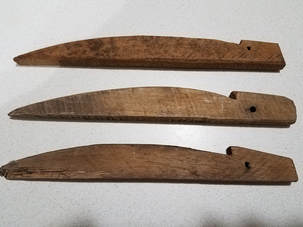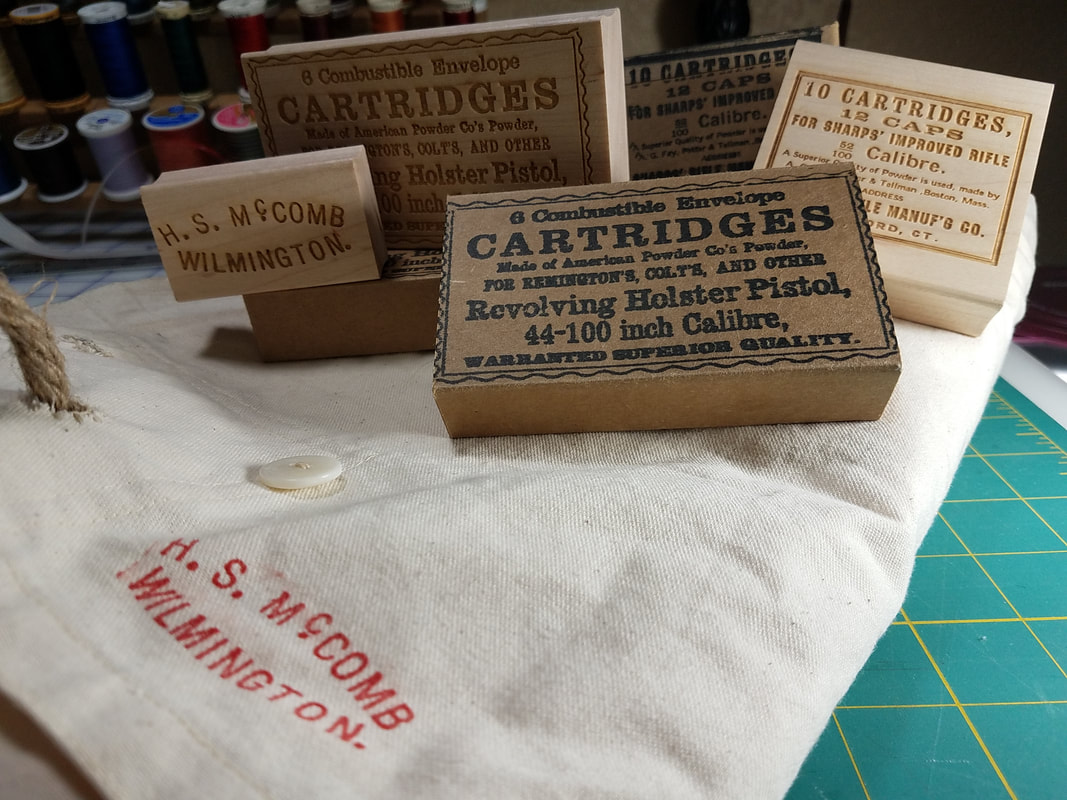 Photo from the National Museum of the United States Army
Photo from the National Museum of the United States Army As the company wood wright, I spend a lot of time researching camp artifacts to reproduce. The best part of that research is recreating a piece from the Civil War that is either entirely unrepresented or nearly so. So, when I saw some photos from the Maple Leaf, my gears began turning. The wreck of the Maple Leaf left behind many intact artifacts from the Civil War. While you can visit museums back east and see them, photos online are scarce. This photo, which links directly to a museum, had the well known yet under-represented peanut or dog-bone tent slip. Yet next to it, are three tent stakes I had not seen reproduced. My second thought, was "oh, I've seen those before!" They reminded me of French WWI tent stakes.
Having a few French WWI tent stakes in my collection the two eras are nearly identical with only the rope hole missing on the head of the Civil War stakes. If you figure a Civil War dog bone slip is around four inches long, that would also put these at roughly the same length. Tent slips are sometimes made from wood an inch thick but this image seems to indicate a smaller thickness. I would guess somewhere around 3/4". These also appear to be smaller versions of tent stakes sometimes associated with Sibley tents, but those could be nearly twice as long.
I'm not only putting my research out there but I've also included what I think may be the only template online for these style of stakes. This template is taken directly from an original French stake and like the photo above, all of them varied to some degree. Two areas that stand out consistently to me include the degree of hook on the rope notch and the thickness of the "belly" of the stake. The French stakes have some unique construction features in that they appear to ripped to thickness with a rough circular saw blade and then cut with some sort of bandsaw or turning saw. Given the mechanization of the Great War, I'd bet on a band saw. While circular saws did technically exist during the Civil War they would not be common or in great use until after the war. Water or steam powered bandsaws were still commonly used to mill lumber. The French ones also have chamfered edges for longevity. Given where the chamfer ends near the hook, I'd say it was done with a spoke shave.
Below you will find the .pdf of our pattern for you to examine and experiment with. The wood appears to be oak on the French examples. If not oak, then another common European ring-porous wood like beech or ash. The grain pattern in the Maple Leaf examples appear to be of oak. That and oak turns gray when exposed to weather.
With a few last notes, the measurements for the French stake, I made in imperial measurements. I'm sure they're actually in metric. Lastly, don't take anything you make into the field with tool burn marks on the wood. I see too many sutlers or Civil War woodworkers selling goods with obvious modern tool burn marks. This may come as a surprise but electric, high-speed shop tools didn't exist 150 years ago. Short-cutting with modern tools is fine, but take a minute with some sandpaper to disguise it.
DOWNLOAD OUR FREE TENT STAKE PATTERN BELOW!
| |||


 RSS Feed
RSS Feed